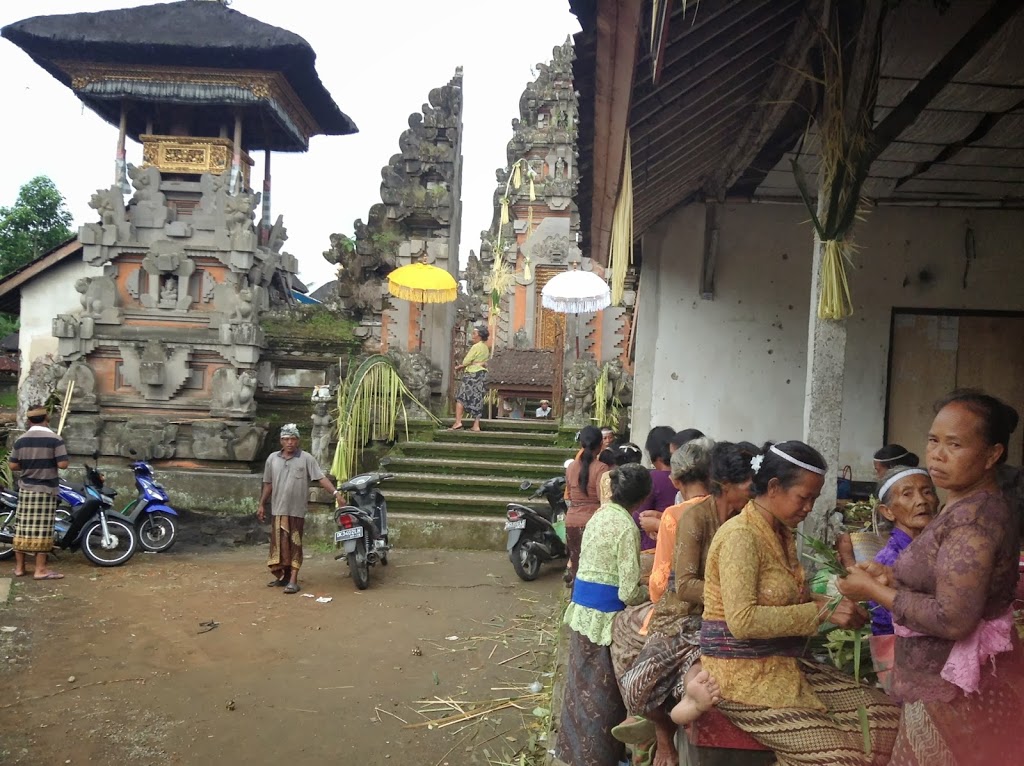 |
| Riding through the countryside near Tinkup we stop next to a temple where many women are congregating ~ wondering what all the action is about… |
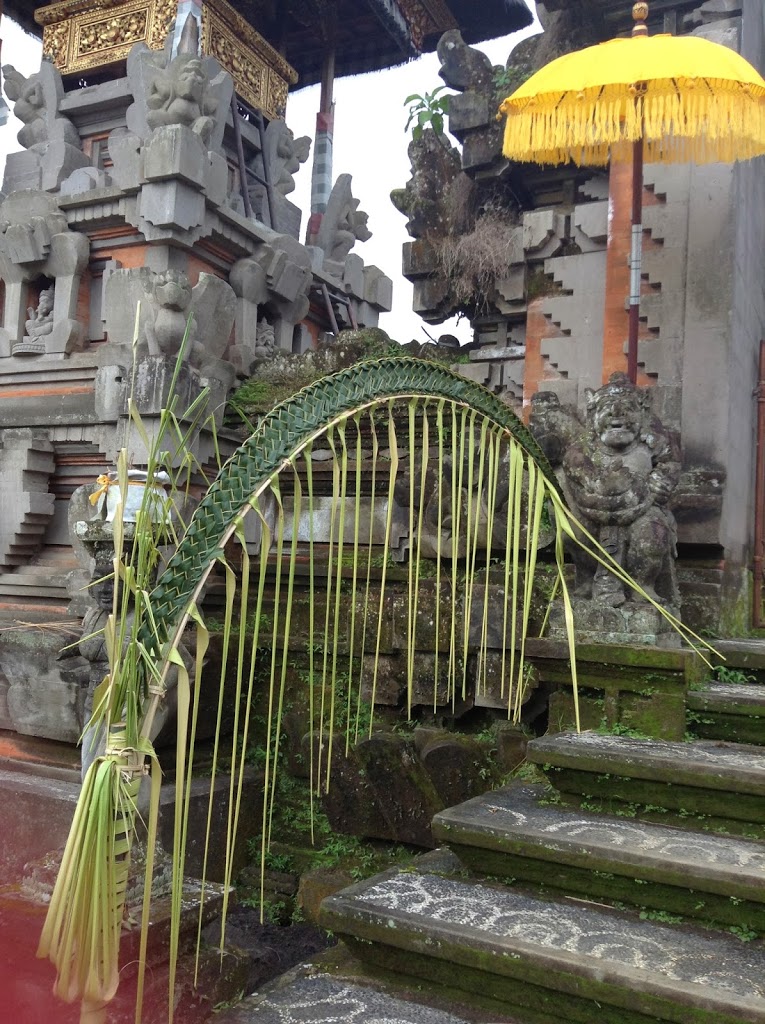 |
| The stairway to the temple is decorated with woven coconut leaves announcing upcoming festivities. Yellow umbrella a symbol of good luck. |
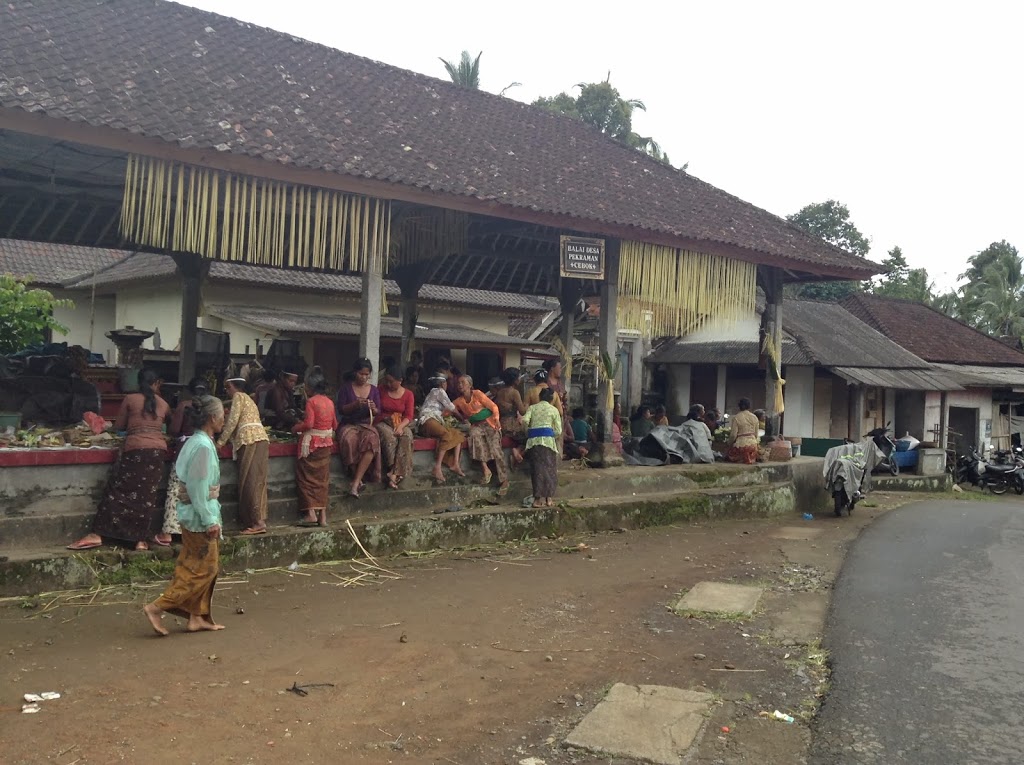 |
| Communal house filled with the pleasant buzz of village women working and chatting |
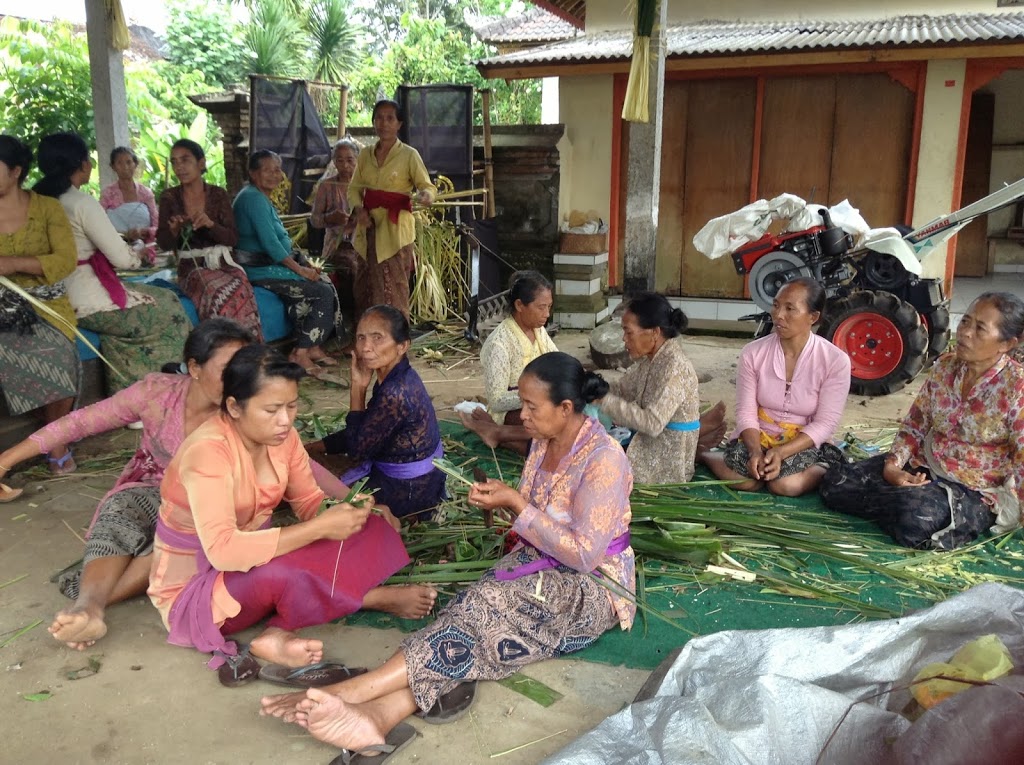 |
| Colorfully dressed village women are busy preparing offerings for the upcoming ceremony. This entails intricate weaving of strips of coconut leaves into small trays to hold flowers as well as into decorative ornaments. |
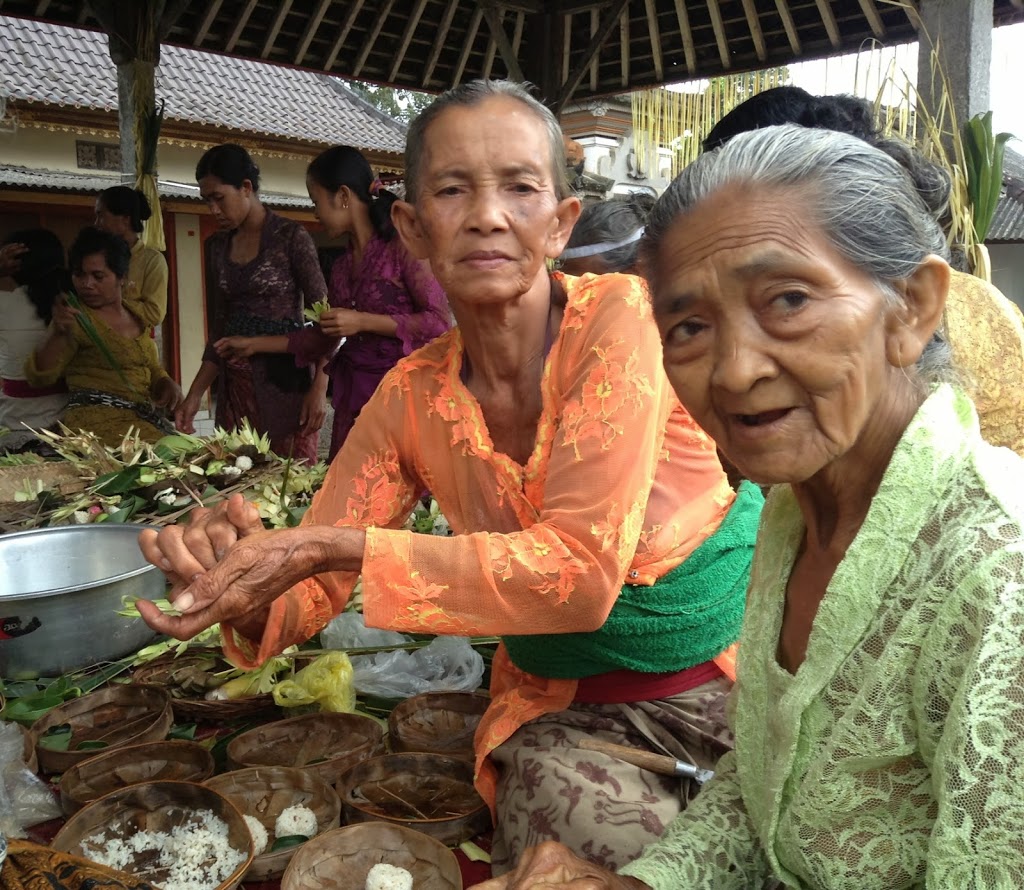 |
| The women are happy to show me what they are working on. Lacy colored blouses are what women wear to ceremonies. The preparation for ceremony is a part of daily life. |
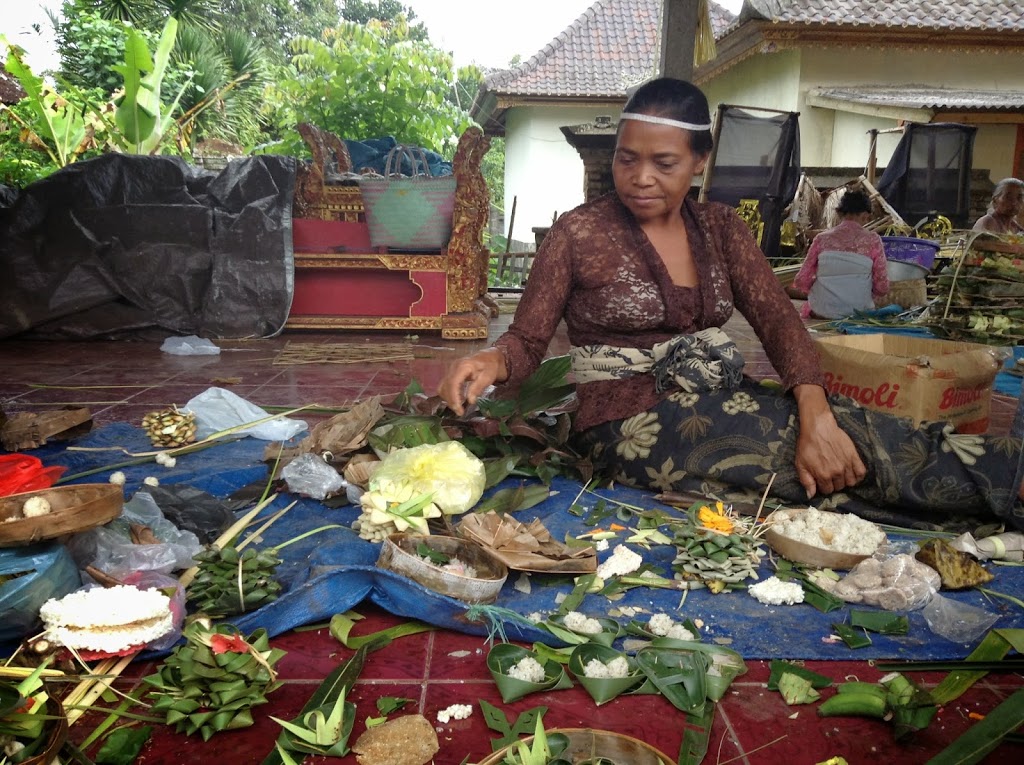 |
| A woman sorts flowers from rice and coconut leaf “holders”. |
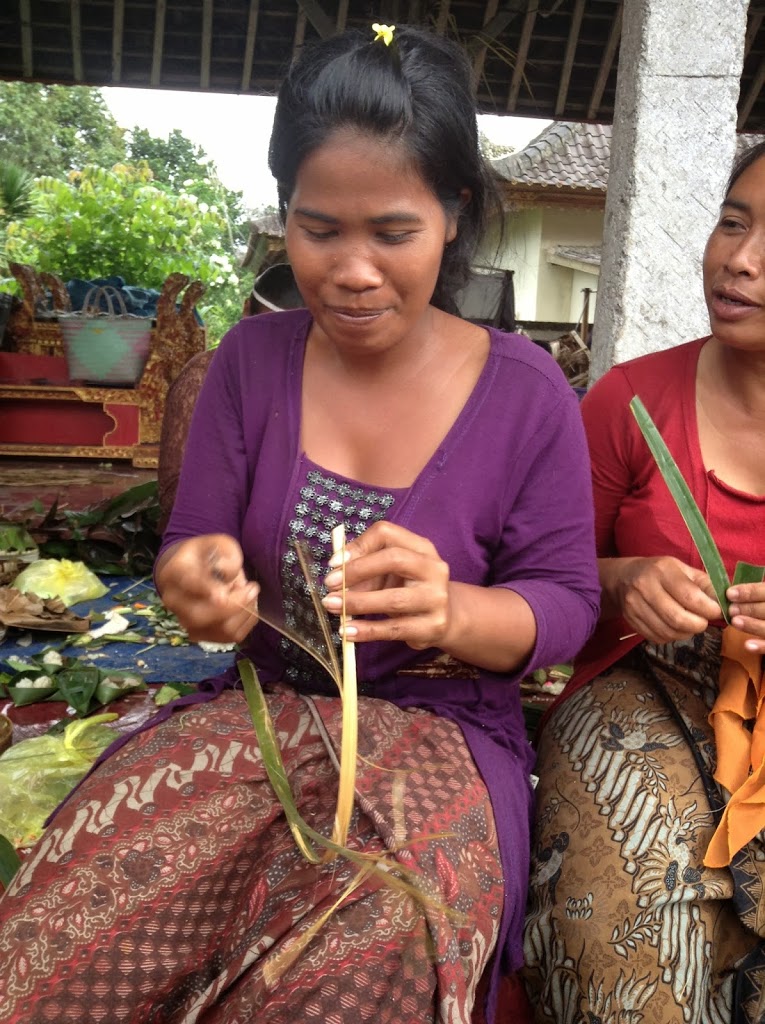 |
| The skills used to prepare the weavings are passed down from one generation to another. Here a young woman is weaving strips of coconut leaf. |
In a different small village we stop by a particularly beautiful temple overlooking the rice paddies, with soaring sculpted open gates at the entrance.
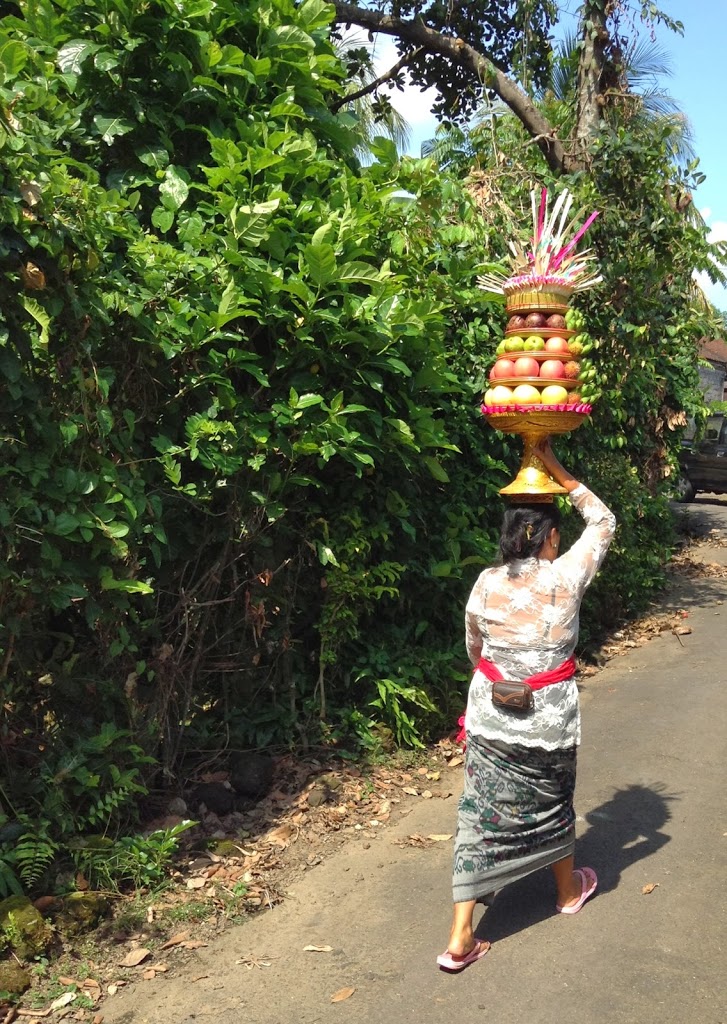 |
| A multi tiered offering on its way to the “pura” (temple) |
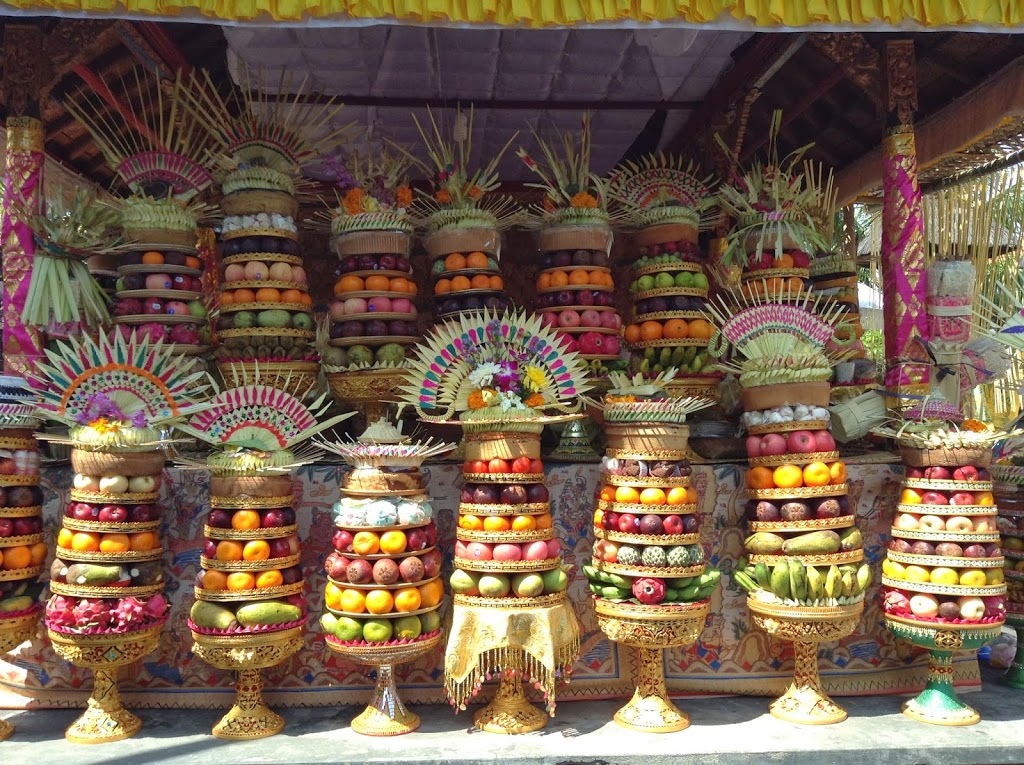 |
| Pyramids of fresh fruit lined up in one area of the temple ~ offerings to the gods. |
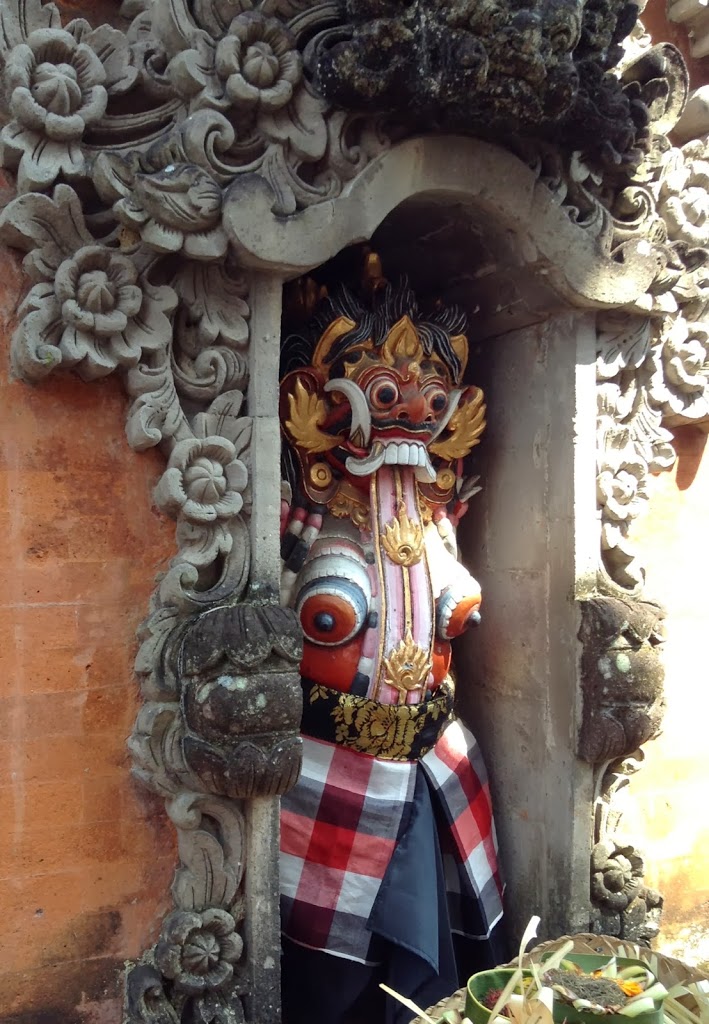 |
| An interesting rather large breasted sculpture, known as Rangda ~ demon. This sculpture is found only in Pura (temple) Dalem and is connected with black magic. There is always a balance of good and evil, which creates harmony. |
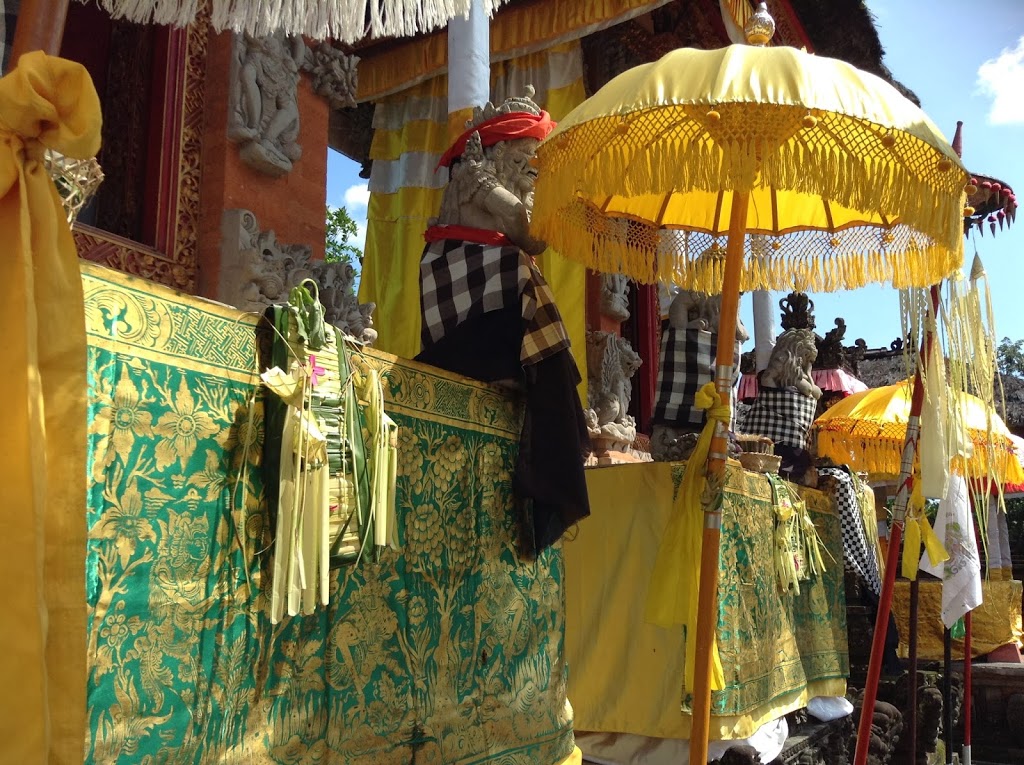 |
| Everything is covered in ceremonial cloth. Sculptures, shrines and trees are wrapped. Umbrellas are an important feature, with each color having a different meaning. |
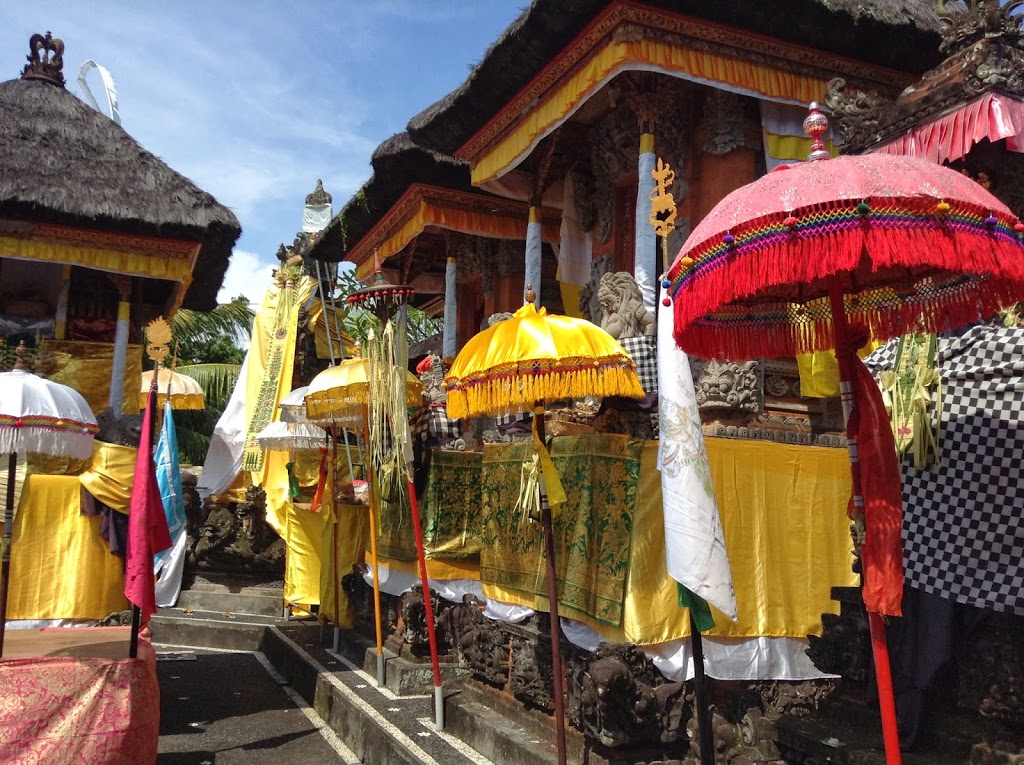 |
| White and yellow are holy colors. Red is symbolic of strength and power. Umbrellas are a sign of respect to the gods. |
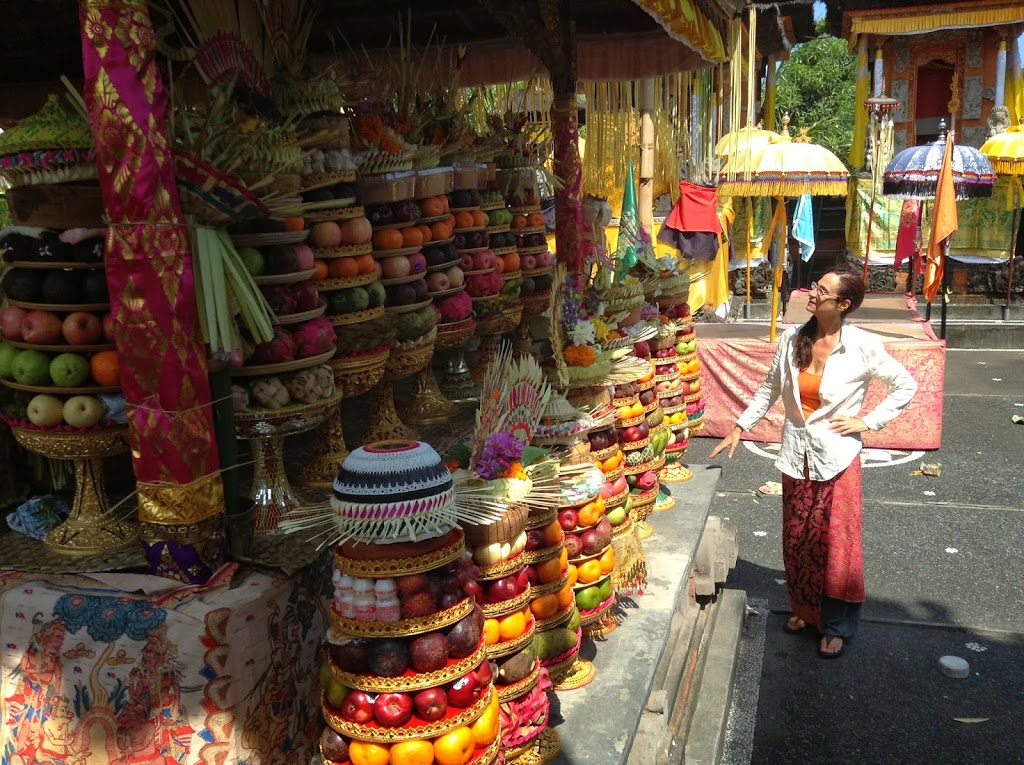 |
| This is so far the hugest offering we have seen. Towers of fruit, offerings of thanks to the gods. After the ceremony everyone gets to eat. A constant flow of give and take. |
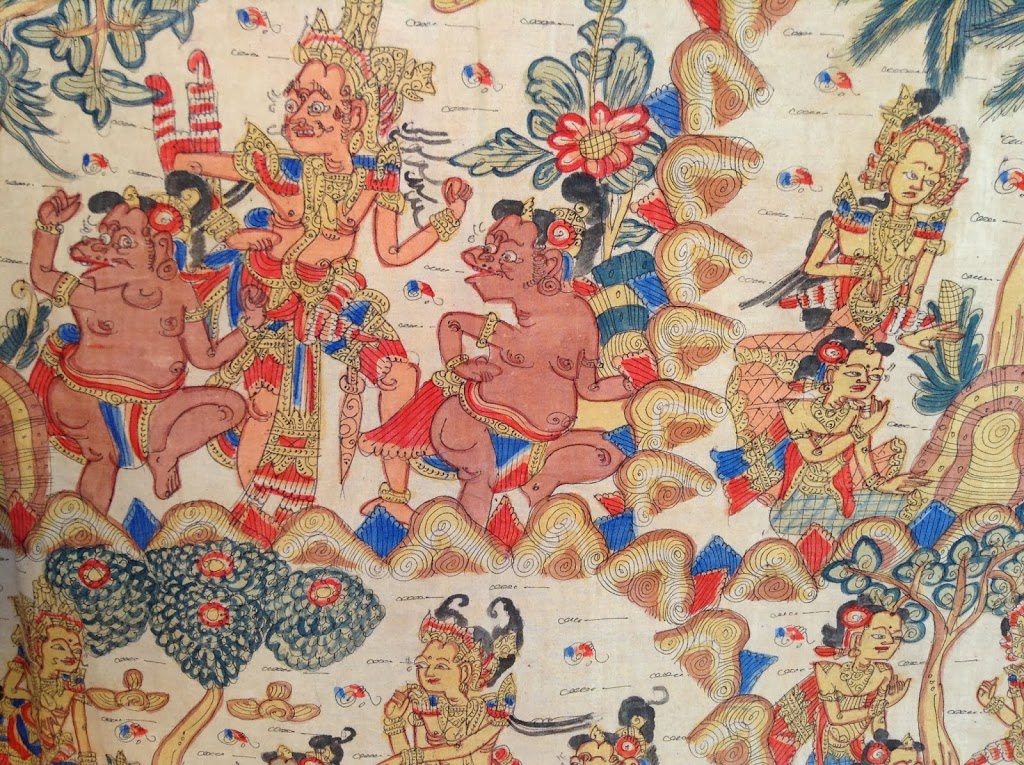 |
| Cloth covering the offering table. |
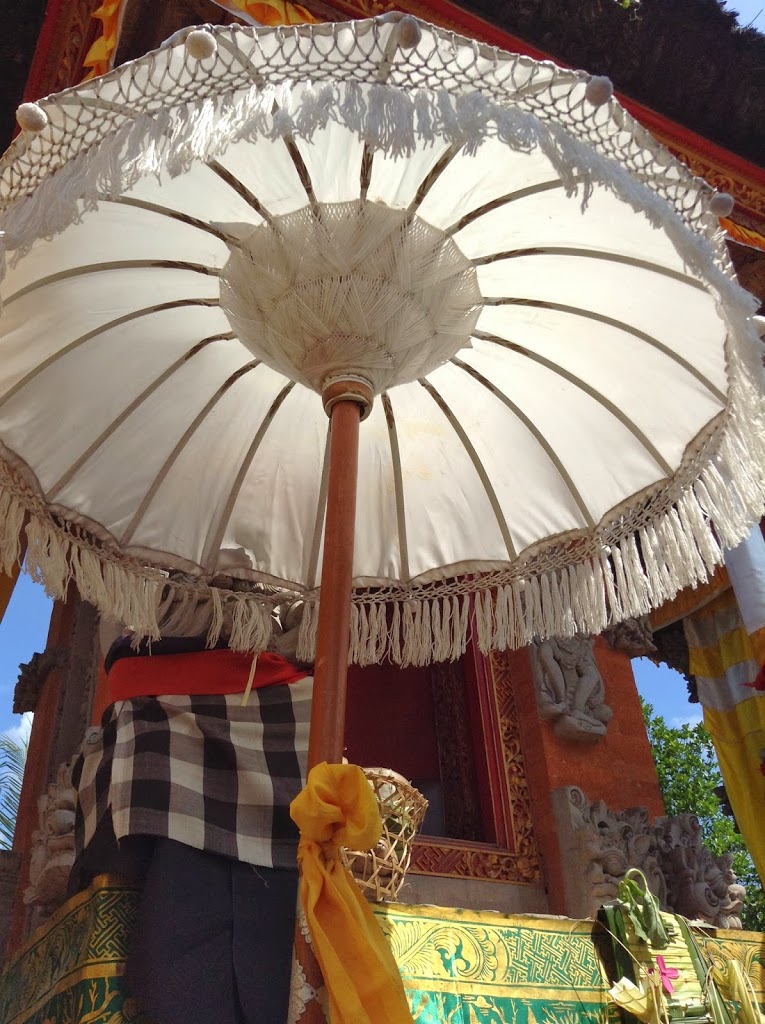 |
| Umbrellas are an important feature of all offerings and ceremonies. |
For the endless procession of holy days, temple anniversaries, celebrations, sacred dances, wedding ceremonies, death and cremation ceremonies and other activities which define Balinese life there are two calendars systems.
In two weeks, at the end of March, is the holiest, most important day of the year in Bali. “Nyepi Day” ~ The Balinese day of silence opens the Balinese New Year. It falls on the day following the dark moon of the spring equinox. It is a day to make and keep the balance of nature. Weeks before there is a lead up to the day of silence. The day before there is a huge exorcism ceremony with Ogoh Ogoh (huge monsters made to symbolize the evil spirits), the main feature of the carnival in the streets.
The actual Nyepi Day is completely silent. Everyone stays home, no electricity, no cars, no one in the streets. Even the airport and all flights in and out of Bali are shut down. A day of self introspection to start the new year.














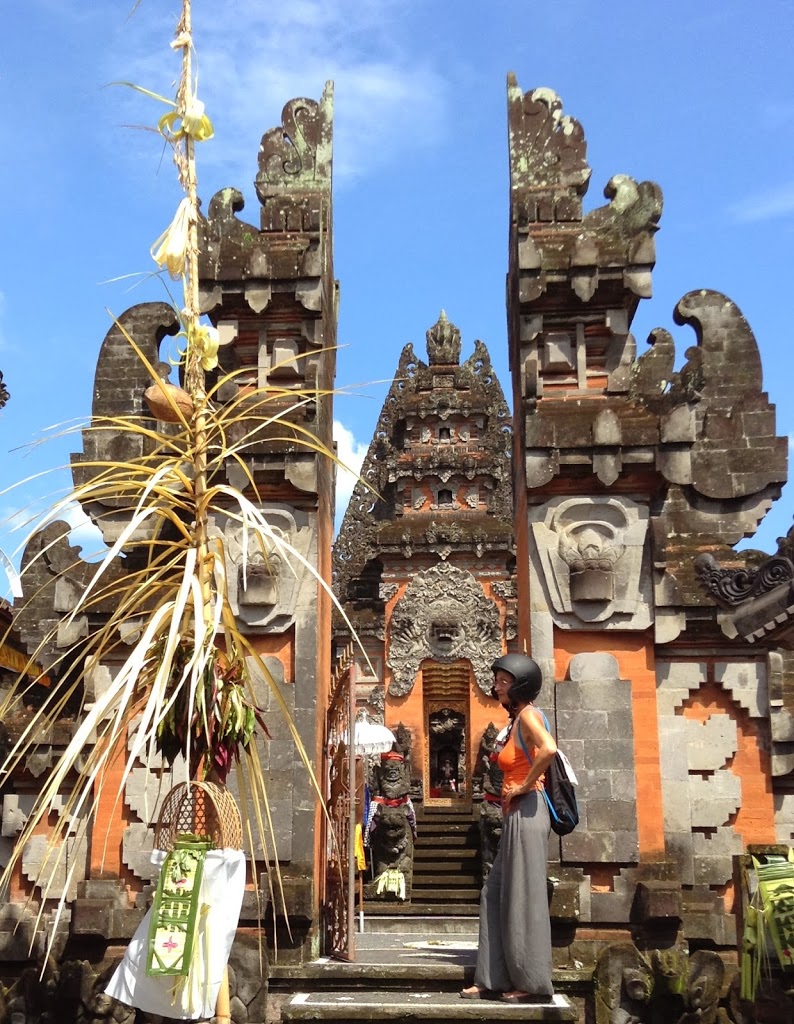

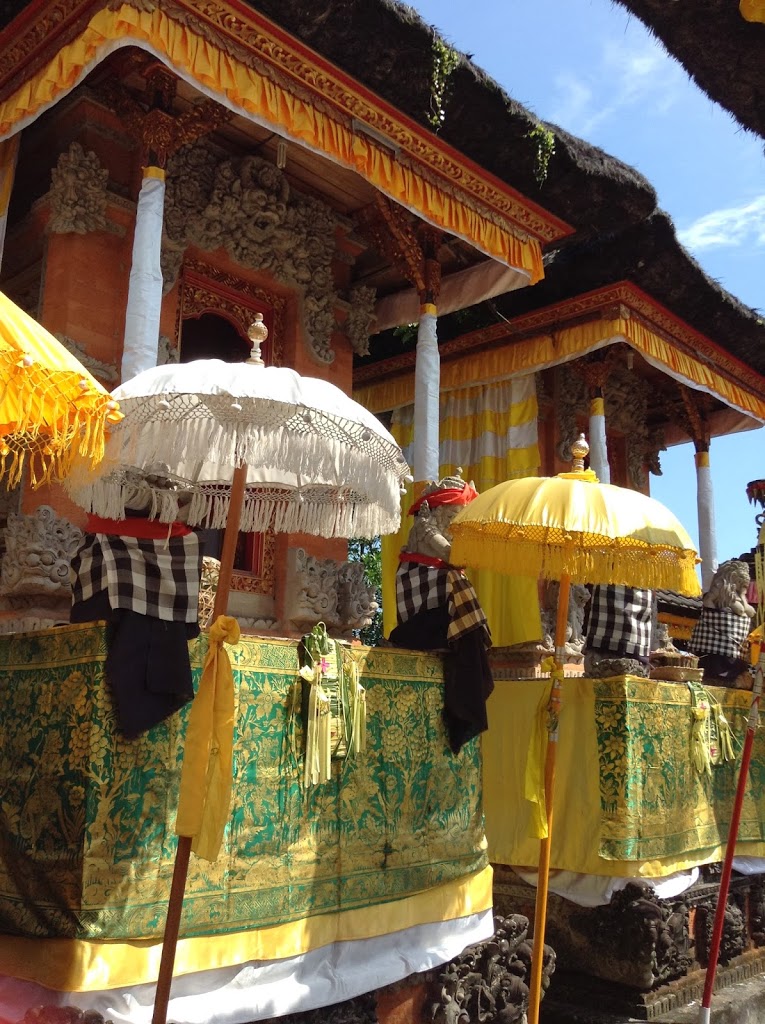
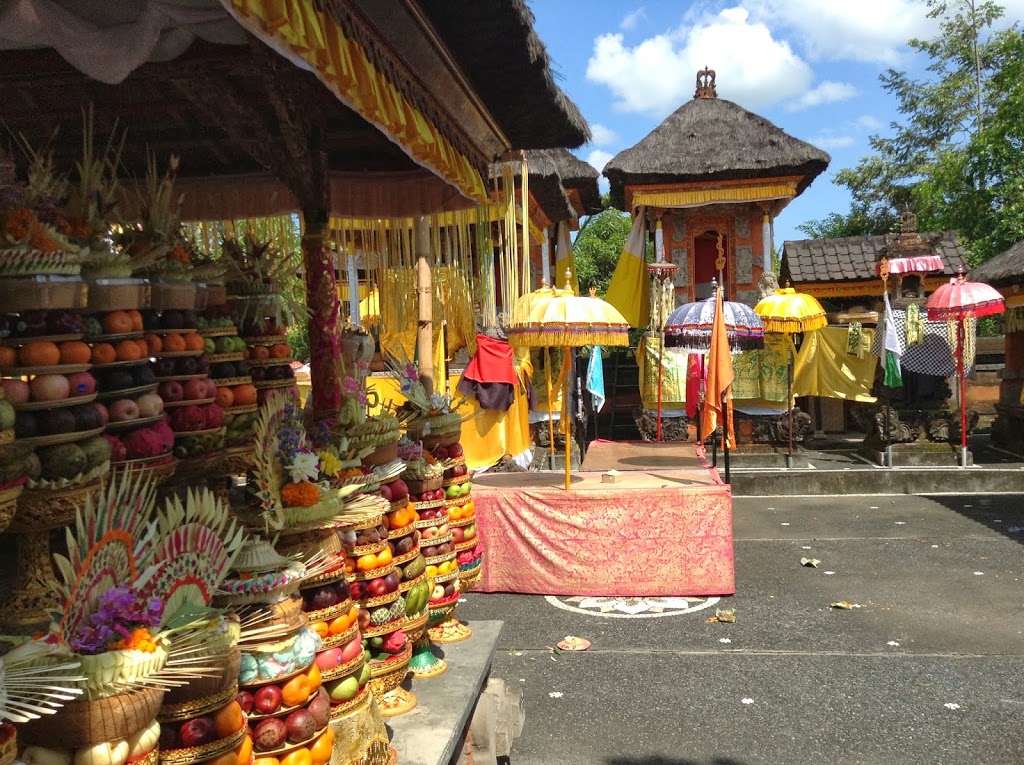
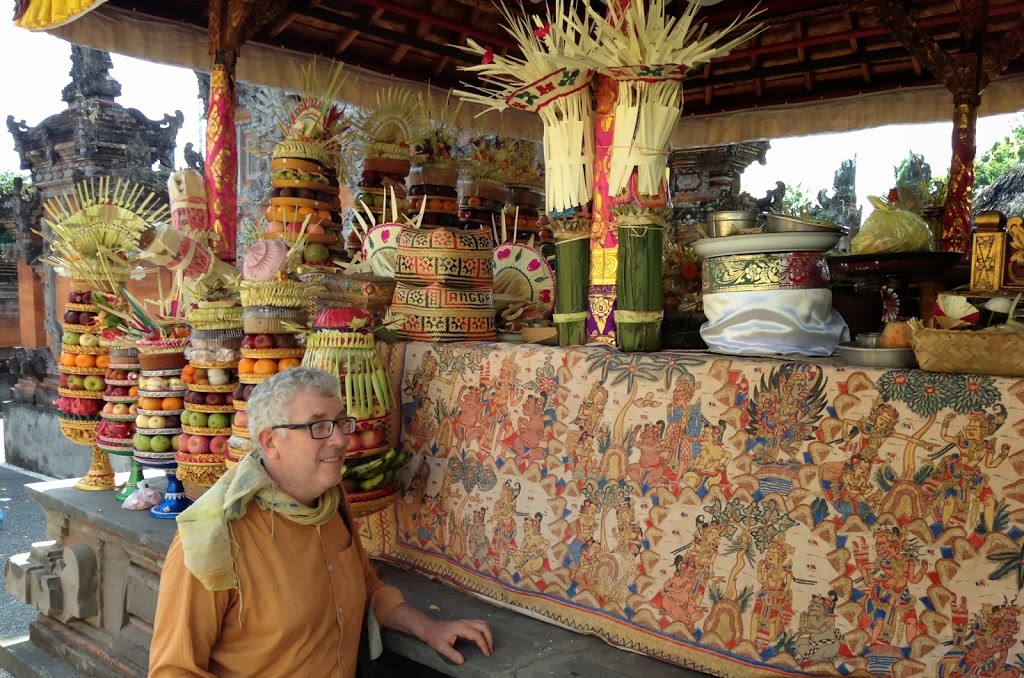

I love these people. How interesting to have a religion that requires collaborative art, In Real Life, ongoing and constant. These women are so intent, focussed on their work, each other, you. Very intimate photos. Nyepi Day reminds me of Yom Kippur. Is it a fast day?
Yes it is.
Yes, art and religion and every day life all intertwined. Thanks for the feedback on the photos. Nyepi Day appears to be similar to Yom Kippur in many respects ~ but no fasting!
Yes, Nyepi is a fasting day.
LOVED IT!
Thanks Brook!!